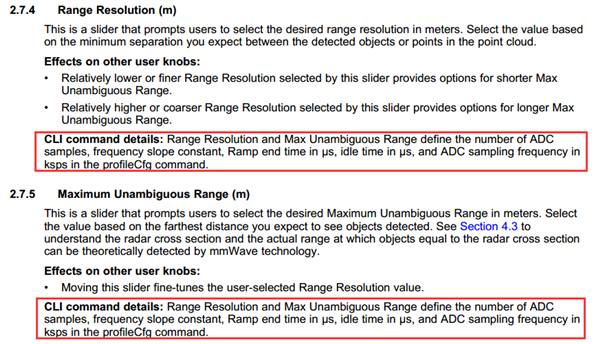Hi,
After reding the MMWave Demo Visualizer User's Guide and Programming Chirp Parameters in TI Radar Devices, I have some questions as below:
1. I thing the slope of chirp = sweep bandwidth / ramp end time and the sampling rate = samples per chirp / ramp end time according to the above documents, is my understanding correct?
2. I found the CLI command details of 2.7.4 and 2.7.5 on the MMWave Demo Visualizer User's Guide are the same, does this mean that the rang resolution or max distance alone cannot determine certain CLI command, which can only be determined when both rang resolution and max distanc are determined ?
3. On the 2.8.2 of MMWave Demo Visualizer User's Guide, I can't understand that why max range can defines the frequency slope constant? Because acording the Programming Chirp Parameters in TI Radar Devices, the max Range = (IF_max*c)/(2S), and the IF_max is also dependent on the ADC sampling frequency used, so I think the max range can only determines the value of (IF_max/S) . Can you help me solve my problem?
Best Regards ,
Monica



